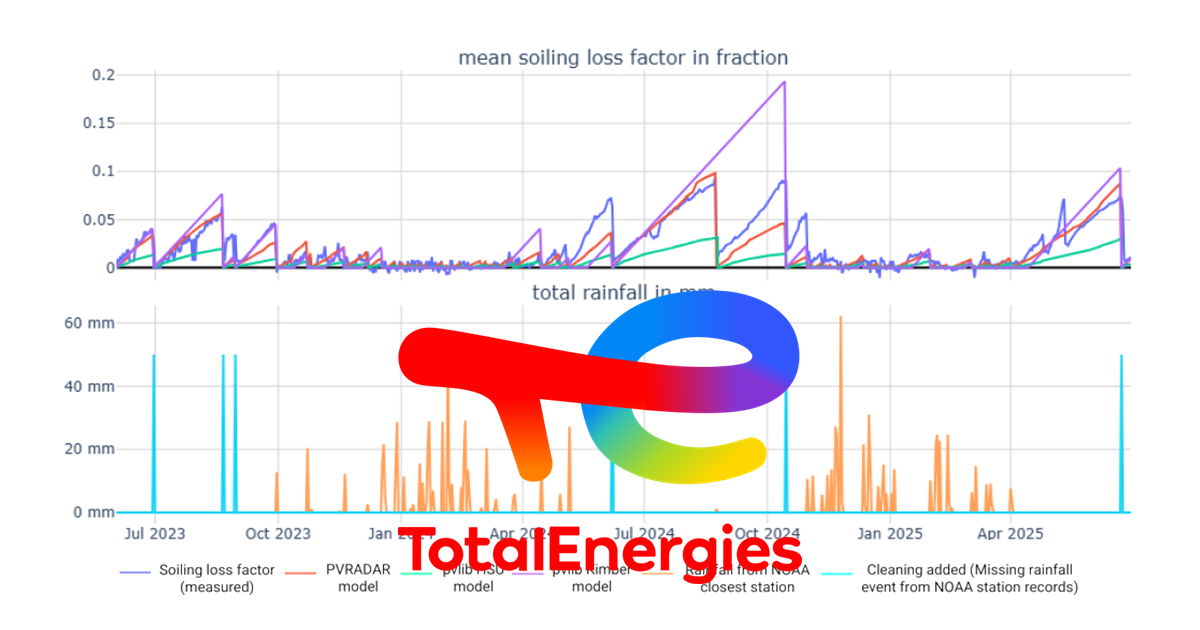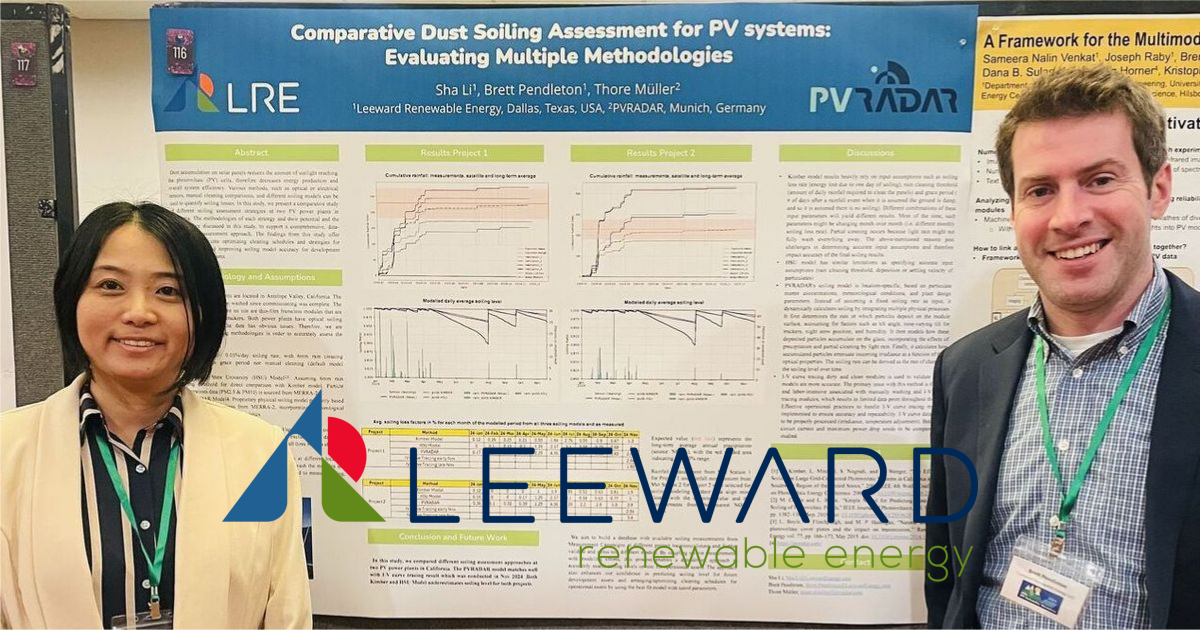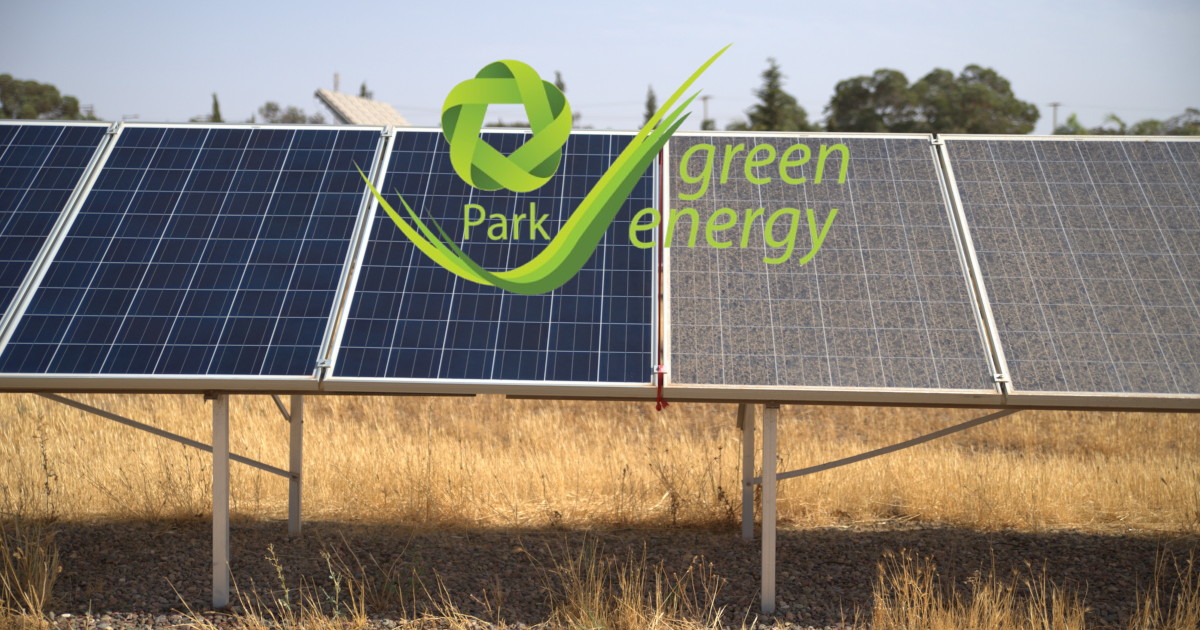PVRADAR soiling integration within PlantPredict
Terabase PlantPredict is a leading platform for layout optimization and energy yield prediction. Through the Soiling & Cleaning Extension, users can now import daily soiling loss factors right into their prediction.
- Import site-specific soiling loss factors right into your prediction
- Daily or monthly soiling loss factors based on 20 years of historic data
- Compare different technologies and optimize cleaning schedules to minimize cost
Soiling Extension for Daily Soiling and Cleaning Optimization
Soiling Extension for Daily Soiling and Cleaning Optimization
The Soiling Extension connects PlantPredict directly to PVRADAR, allowing users to import daily soiling loss factors for any Prediction. Additionally, users can optimize cleaning strategies and improve overall project value.
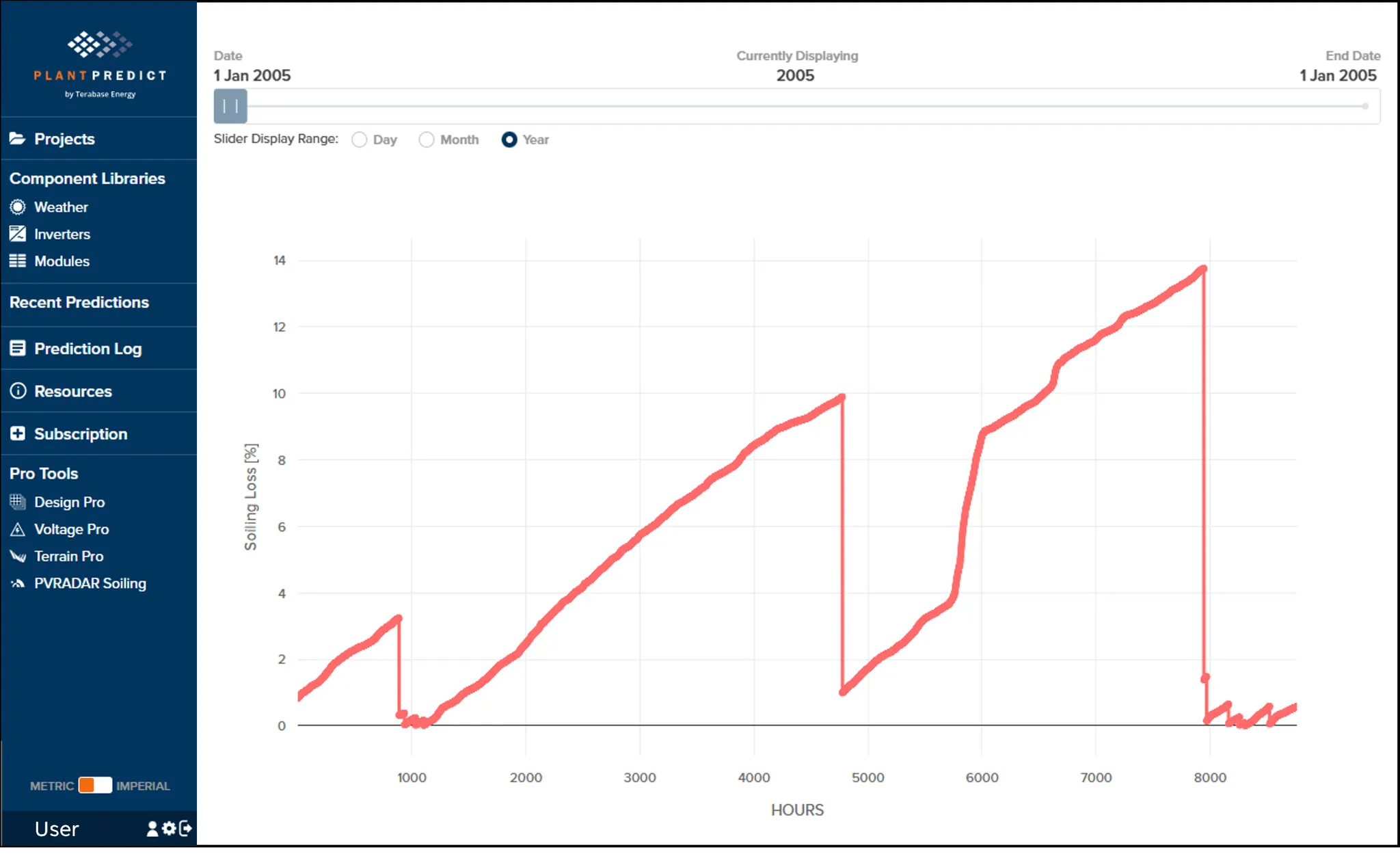
Enhance Your Yield Estimation with Daily Soiling Insights
- Daily-resolution soiling loss factors for more detailed and accurate performance assessments
- Results derived from 20 years of historical meteorological data, improving long-term soiling behavior representation
- Estimates include hard-soiling conditions, accounting for the organic fraction of contaminants that are not removed by rainfall
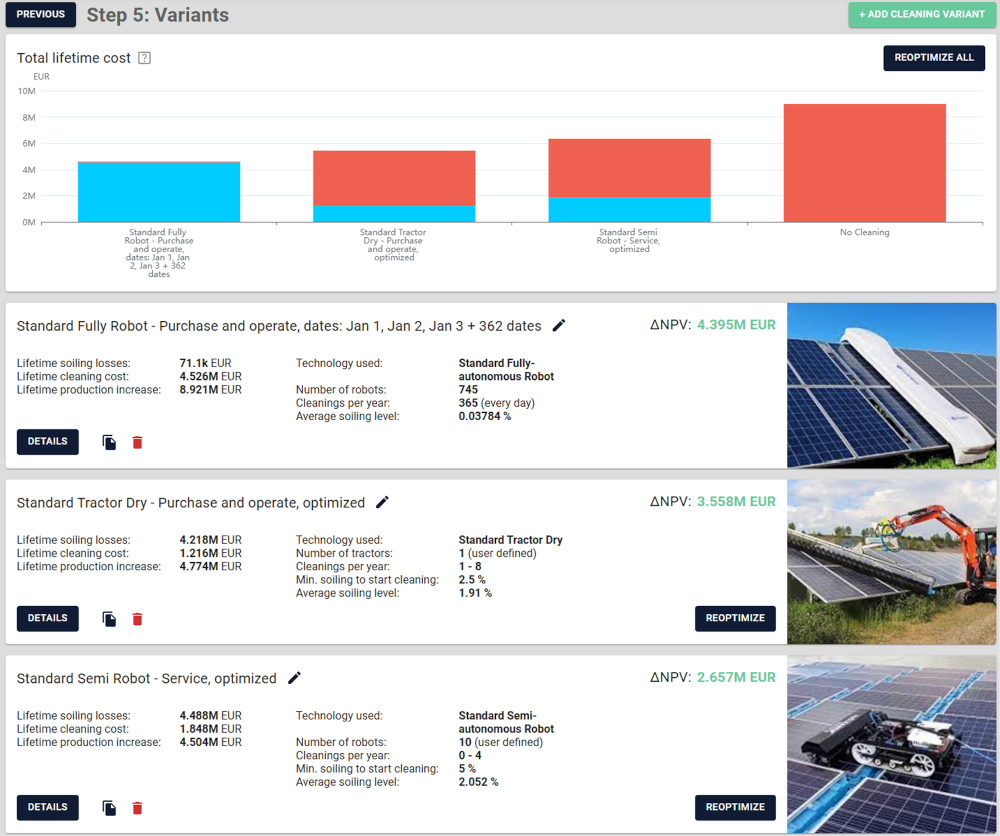
Optimize cleaning cost and reduce soiling losses
- Cleaning is an investment. Find the right balance between soiling reduction and OPEX budgets
- Decide how often and when to clean based on site-specific historic precipitation patterns
- Compare all possible options: tractor plus brush, semi- and fully-autonomous cleaning robots, dry and wet
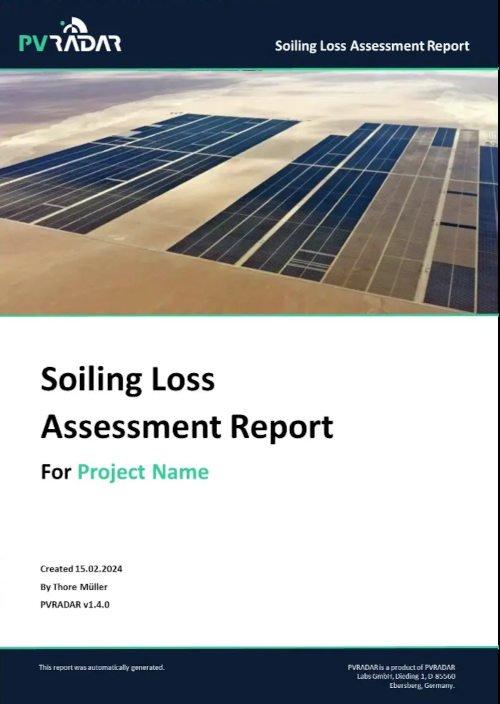
From your prediction to an accurate soiling loss estimation in under 5 minutes
- Within PlantPredict, click on the PVRADAR Soiling Extension (in Pro Tools)
- You are redirected to PVRADAR. Select the prediction you are working on from the list
- Review soiling modeling results
- Optimize the cleaning strategy based on your preferences
- Once you are done, the daily soiling profile is automatically applied to the prediction weather file in PlantPredict
- Print a PDF report including a summary of all data-sources, model parameters and results
Select the Best Option for You
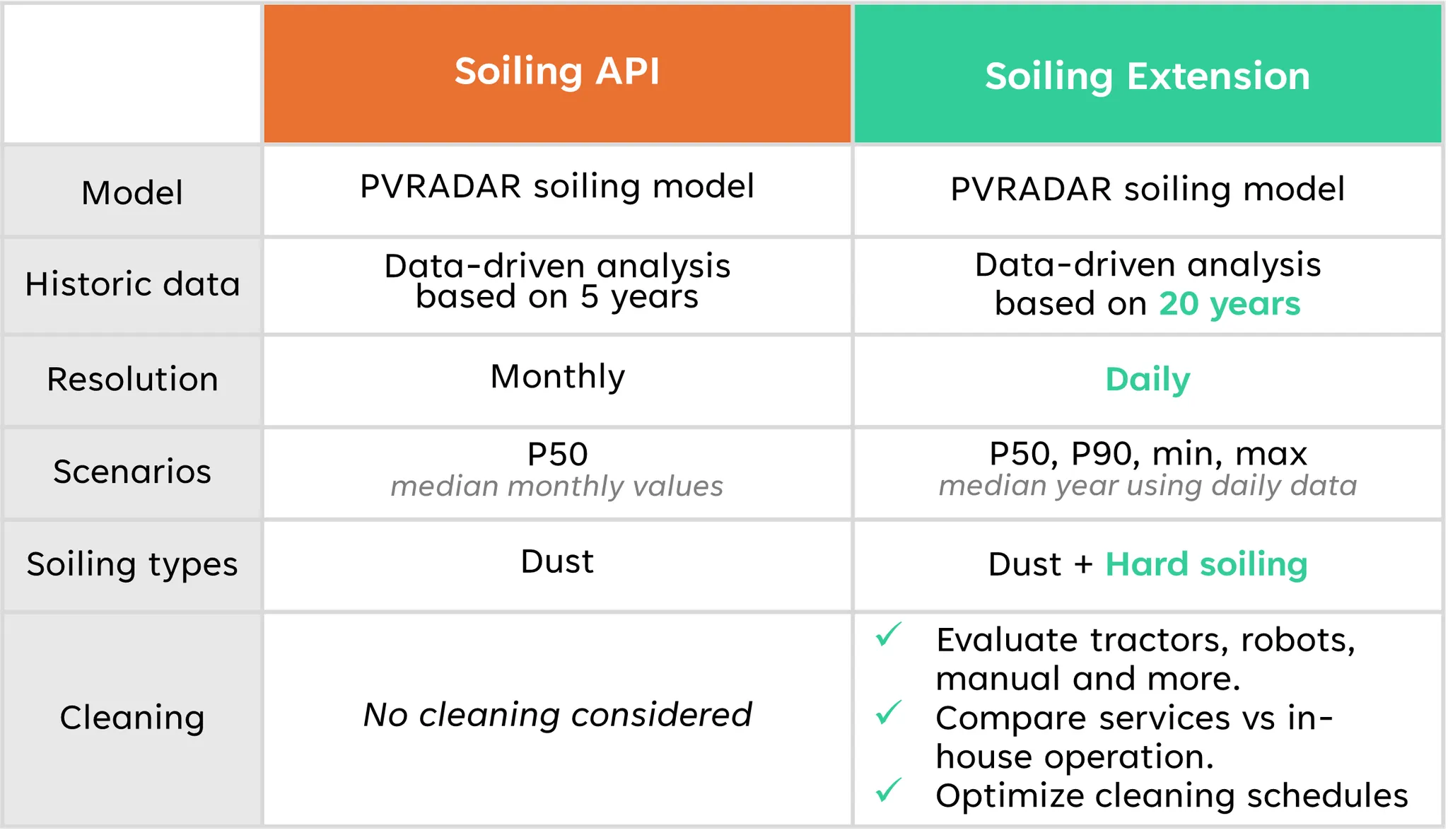
PVRADAR offers two integrated solutions within Terabase PlantPredict, designed for different levels of analysis and workflow needs:
Access monthly soiling loss factors directly inside PlantPredict using a single click.
Ideal for quick estimations during early-stage design, feasibility assessments, and energy-yield predictions.
Connect your PlantPredict predictions to PVRADAR for high-resolution daily soiling profiles and cleaning optimization.
Designed for users who require greater accuracy, long-term soiling trends and detailed cleaning planning.
PVRADAR Soiling Model has been Validated by Industry Leaders


Brett Pendleton
Director - Performance & Design
Discover independent studies and real-world success stories that demonstrate the accuracy and reliability of the PVRADAR Soiling Model. Explore third-party validations from leading organizations, including field-measurement comparisons performed in the U.S. by NREL, as well as results from industry partners who have tested and trusted our model in diverse environments.
Interested? Get a DEMO!
Schedule a Demo today with the PlantPredict team and learn how to accurately estimate soiling losses for your projects.

